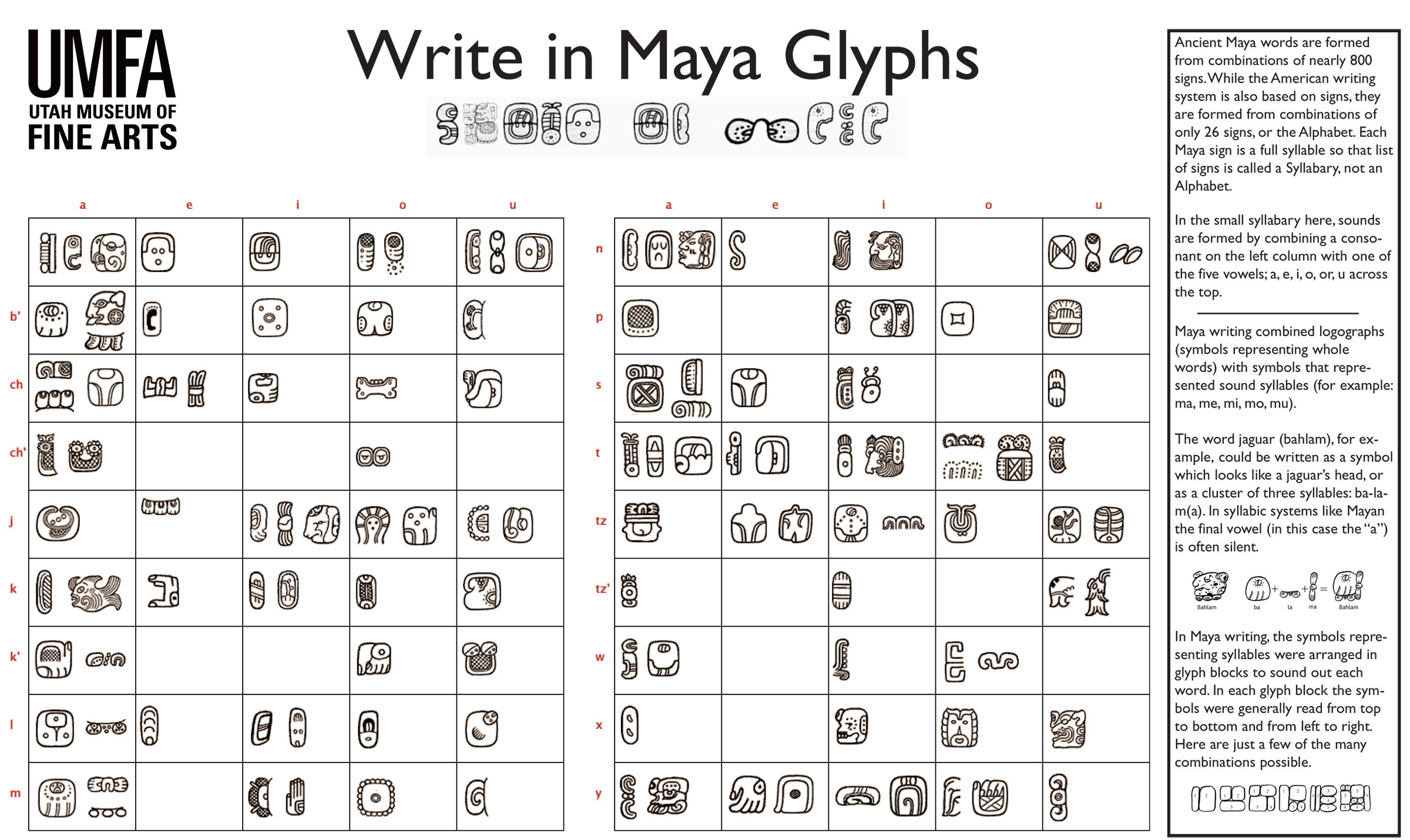
Thanks to the work of many other epigraphers (eh-PIG-ruh-fers, people who decipher and classify ancient inscriptions), we now know that Maya writing has two kinds of symbols. The sound "bay," in spoken Maya, means "road." The glyph for "road" is a little path with footprints! What alphabet includes feet? It wasn't until 1952 that Russian linguist Yuri Knorosov realized that the symbols stood for sounds, not letters. "The bishop asked, 'How do you write 'bay' - the letter 'B' in Spanish - and the man drew a picture of a pair of feet." People in Europe thought the man was making a joke. The bishop assumed the Mayas had an alphabet, like Spanish. "Well, the wretched fellow did the best he could," Graham recounts.
KA IN MAYA GLYPHS CODE
The story of cracking the Maya code begins with one of them, Bishop Diego de Landa, who asked an educated Maya about his language. Maya books were burned - only a handful survived. In the 1500s, Spanish conquistadors defeated the indigenous peoples of the region and destroyed much of their culture. After that, the Maya mysteriously abandoned many of their major cities, and their civilization collapsed. This is called the "Classic Period" of the Maya. ( See map.) Their hieroglyphic texts were inscribed mostly from AD 250 to 900. The Maya lived in what is now Mexico, Guatemala, Honduras, and Belize since at least 2600 BC. But the key to Maya writing did not begin to unfold until the 1950s. Maya dates and numbers were decoded in the 1800s. Some 85 percent of the writing has been deciphered, but the rest is still a puzzle many are working to solve. They are also the last great language mystery on the planet. Maya hieroglyphics make up the only writing system native to the New World. It's stuffed with books, wide tables, and a darkroom. "New monuments do appear quite often," Graham says in an interview in his museum office.

He's recorded 400 monuments for the Corpus of Maya Hieroglyphics, which he directs for the Peabody Museum in Cambridge, Mass. He has been documenting all the inscribed monuments of the Mayas and publishing them in books so they won't be lost. That was the beginning of what became Dr. Graham works quickly to record his finds with photos, maps, and drawings. Graham's passion is searching for treasures like these: crumbling buildings, statues, and tall stone monuments called stelae (STEEL-uh), carved with hieroglyphic writings.


There, beaten by weather and overrun with vines, lie ruins of the ancient Maya, a civilization that collapsed a thousand years ago. The team treks through the humid overgrowth until they reach a site his guides had spotted earlier. A young Ian Graham packs supplies on a few mules - food, mosquito nets, a camera, a machete - and hires a group of Guatemalans to lead him along the ragged jungle paths they've cut to gather chicle for chewing gum.


 0 kommentar(er)
0 kommentar(er)
